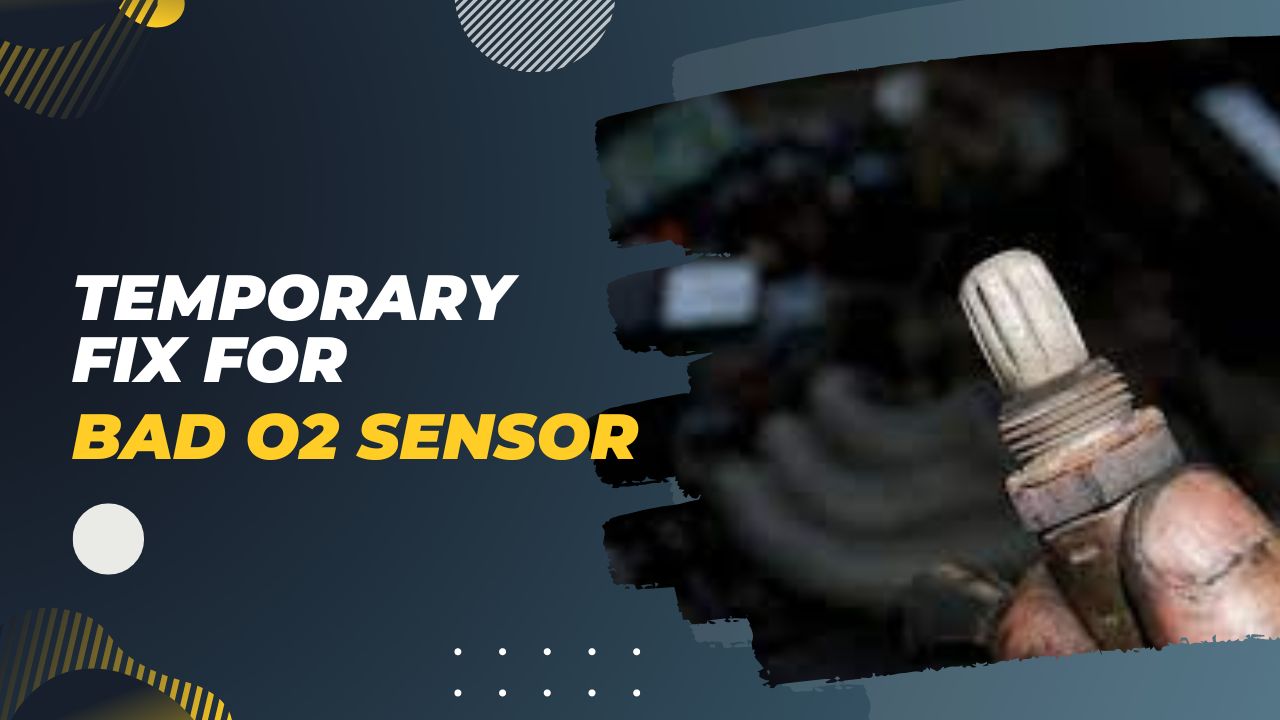
The oxygen sensor, also known as the O2 sensor, is a crucial component of your vehicle’s emission control system. Its primary function is to measure the amount of oxygen in your car’s exhaust and provide feedback to the engine’s control module to optimize fuel efficiency and reduce harmful emissions.
Causes and Symptoms of a Bad O2 Sensor
A faulty oxygen sensor can cause a range of problems in your vehicle, including decreased fuel efficiency, rough idle, and increased emissions. The most common causes of a bad O2 sensor are age, wear and tear, and exposure to extreme temperatures or harsh conditions.
Symptoms of a bad O2 sensor include:
- Check engine light illuminated
- Reduced fuel economy
- Rough idling
- Decreased acceleration
- Unusual exhaust odor
The Temporary Fix for a Bad O2 Sensor
While it’s important to replace a faulty O2 sensor as soon as possible, there are temporary fixes you can do to improve your car’s performance and reduce emissions in the meantime.
One popular method is to add a fuel additive to the gas tank. Fuel additives like Sea Foam or Techron can help clean the O2 sensor and reduce carbon buildup, which can prolong the lifespan of the sensor and improve its accuracy.
Another temporary fix is to reset the engine control module by disconnecting the car’s battery for a few minutes. This can clear any stored codes and allow the O2 sensor to recalibrate itself.
Final Thoughts and Recommendations
While a temporary fix for a bad O2 sensor can improve your car’s performance, it’s important to remember that it’s not a permanent solution. Eventually, the sensor will need to be replaced to prevent further damage to your car’s emission control system and ensure optimal performance.
If you’re experiencing symptoms of a bad O2 sensor, it’s recommended to have your vehicle inspected by a qualified mechanic. They can diagnose the problem and recommend the best course of action to get your car back on the road safely and efficiently.
Oxygen sensors play a critical role in your vehicle’s performance and are essential for meeting emissions standards. A bad O2 sensor can lead to increased fuel consumption, decreased power, and higher emissions, which can result in a failed emissions test.
If you’re unable to replace the sensor immediately, there are some things you can do to extend the life of the sensor and improve your vehicle’s performance.
In addition to the fuel additives and battery reset mentioned above, you can also try cleaning the sensor with a specialized cleaning solution. There are several O2 sensor cleaners available on the market that can help remove carbon buildup and other contaminants that can affect sensor performance.
It’s important to note that these temporary fixes are just that – temporary. While they may help improve your vehicle’s performance in the short term, they won’t fix the underlying problem causing the sensor to fail.
If you suspect that your vehicle has a bad O2 sensor, it’s important to have it diagnosed by a qualified mechanic. They can determine the cause of the problem and recommend the best course of action, whether that’s replacing the sensor or making other repairs to improve performance and efficiency.
In the long run, replacing a faulty oxygen sensor is the best solution to improve your vehicle’s performance and meet emissions standards. Modern O2 sensors can last up to 100,000 miles, but this can vary depending on driving conditions and other factors. If your vehicle is experiencing symptoms of a bad O2 sensor, it’s best to address the problem as soon as possible to avoid further damage and potentially costly repairs.
Conclusion
In conclusion, a bad O2 sensor can lead to a range of problems with your vehicle’s performance and emissions. While it’s important to replace a faulty sensor as soon as possible, there are temporary fixes you can do to extend its lifespan and improve your vehicle’s performance in the meantime.
Fuel additives, battery resets, and cleaning solutions can all help improve the accuracy and performance of your O2 sensor, but these are only temporary solutions. Eventually, the sensor will need to be replaced to ensure optimal performance and meet emissions standards.
If you’re experiencing symptoms of a bad O2 sensor, it’s important to have your vehicle inspected by a qualified mechanic. They can diagnose the problem and recommend the best course of action to get your vehicle back on the road safely and efficiently. By addressing the problem early on, you can avoid further damage and potentially costly repairs down the line.









